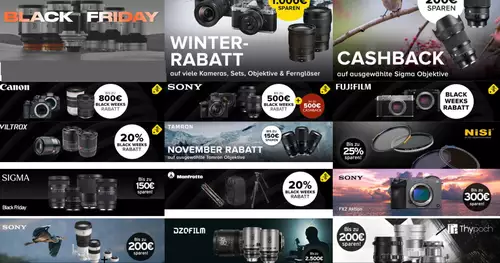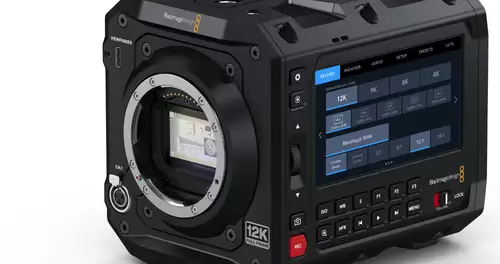Wer die ganzen Parameter nicht braucht/will, ist aber mit der Preset Version auch wirklich gut bedient.
Hier geht's zum Download: https://github.com/jedypod/open-display ... tag/v1.0.0OpenDRT v1.0.0 is released as a node for Nuke, and a DCTL for Resolve. The DCTL comes in two versions: The normal version which has look presets, and a "Stickshift" version with all parameters exposed. I would strongly urge you to use the presets version first and see how you find it. DCTL does not provide a very good user experience for something as complex as the full transform with all parameters, and it is very complicated and not user friendly. The Nuke node also provides a pretty nifty presets system, which makes it rather easy to build a preset in nuke and then copy paste a single line of DCTL to add a preset.
Improve Tonescale
Add Contrast Low module to the tonescale functions. This operation allows creative control over "contrast" in the midtones and shadows, and enables opendrt to form a more finished image out of the box, if desired. It can be applied per-channel or in an RGB ratio preserving manner.
Add Contrast High module to the tonescale functions. This operation allows creative control over the slope of the shoulder in the tonescale, allowing higher "highlight" contrast like ACES 1., or more "filmic" low-slope shoulder tonescale look.
Add Offset control. It turns out that adding a small positive offset is a very important creative component of image appearance, and to omit this operation would be a mistake.
Revise tonescale system math.
Previously OpenDRT used a tonescale system similar to the one Daniele Siragusano posted on acescentral, but slightly modified to allow exact intersection constraints for middle grey and peak display. It accomplished this by applying the display linear output scale before the power function. The end result was pretty much identical due to the intersection constraints, but the downside was that it was difficult to access the 0-1 range pre-output y scale, which is necessary for many look operations like the high end purity compression. Basically you had to do all parts of the tonescale and then un-scale it for the purity compression and other operations. This always bothered me.
For this new version I went back and figured out a new way to solve the constraints when applying output y scale after the power function. This model differs from Daniele's formulation. It prioritizes an exact solve for middle grey, and uses an approximate solve for peak display. Peak display intersection is much less critical to accurately map since small variations are not visible in the image and will suffer from lack of precision in the final integer display encoding anyway. More details available here: https://www.desmos.com/calculator/1c4fhzy3bw
Refine Purity Compression
Previously the purity compression behavior was tied to the "rendering space" weights. To allow more control, purity compression is now driven by a separate non-normalized weighted euclidean norm, which allows better creative control over the purity compression behavior per "wide" RGB hue angle. These parameters are exposed as Purity Compression R G B controls.
Purity Compression Range is the new name for the previously exposed Purity Compress Low slider. There is a Low and a High control. See https://www.desmos.com/calculator/8ynarg1uxk
Add Purity HDR control. This allows creative control over the amount of purity compression as Peak Luminance is increased. At 0, the purity compression will not change as display peak luminance goes up. At 1, purity compression is reduced as peak luminance increases. The previous model for top end purity compression did not work well with the transition from SDR to HDR.
Add Mid Purity adjustments
Mid-range purity turns out to be incredibly important operation for image formation, especially some amount of compression in mid-range purity at the top end. This helps improve the horrible pasty pastel image appearance in image formation approaches like ACES 2, TCAM, and Arri Reveal. To this end I've added a look module to accomplish this as well as to boost mid-range purity at the bottom end.
Expose Brilliance parameters. This module is a mix between a creative look adjustment and a necessary image rendering adjustment. Basically it scales down the vector, increasing with distance from achromatic. This operation reduces disruptions in gradients of narrow spectra light sources, and can also be used creatively to achieve more "dense" or "filmic" image appearance.
Add Hue Shift preferential look modification module. Older versions of OpenDRT had something similar, but it was limited to only adjusting the apparent hue of "highlights" affected by the top end purity compression. This new module offers more flexibility, and is re-engineered to work better as a creative control. It affects more the hue angles near the primaries.
Add Hue Focus R preferential look modification module. This operation affects mid range purity and also hue angle. For example if Hue Focus R is increased, mid-range purity of reds on the bottom end is increased, and there is a hue distortion at the bottom end towards the red primary from both the yellow and magenta side. And conversely, mid-range purity at the top end is decreased, and the hue angles distort towards the yellow and magenta secondary. This module allows a creatively controllable way to dial in some of the nice look aspects of per-channel without being creatively shackled to the tonescale curve.
Add Creative White adjustment. This sets the color of the peak luminance in the final image. D65 is the default, but the color can be made warmer all the way down to D50 to achieve a filmic look with warmer highlights. Additionally a Creative White Range slider was added to control how much to affect midtones and shadows. At 1.0, this operation is simply a CAT matrix to the desired whitepoint. At 0.0, it is mixed by the tonescale curve.
Expose Purity Compress Low module. This is a final "gamut compress" style operation that improves smooth rendering and increased tonality of very pure colorful gradients.
Add a selection of Look Presets
Default: an image formation that includes minimal adjustments for an aesthetically pleasing image.
Colorful: A very saturated bright exhuberant look, a good fit for animation.
Umbra: A dark moody cinematic look with very low shadow contrast, strong color crosstalk, natural blues, and a warm D50 whitepoint.
Base: only the base components of the OpenDRT image rendering. Practically no preferential adjustements. Purity compression is chromaticity-linear and very minimal. Bright saturated highlights will clip. Mid-range purity is very strong. A good starting point for further look development if absolute control is desired.
Add a selection of Tonescale Presets
Default High-Contrast: The default tonescale curve. Enough contrast to maybe be called a "finished" image, but also could be a good base to build on.
Low-Contrast: A low contrast tonescale curve that is intended as a starting point for further grading. Requires further contrast to be added in order to achieve something resembling a "finished" image (unless of course a very low contrast look is desired).
ACES 1.: A rough match of the ACES 1. tonescale curve. One deviation is mapping 0.0 to 0.0 through the tonescale curve, rather than mapping +0.02 to 0.0... because that is moronic.
ACES 2.0: An exact match to the ACES 2.0 tonescale function. Very low contrast in the highlights, and very strong shadow toe compression while mapping 0 to 0 through the tonescale function. Be careful with this one if adding additional shadow contrast upstream, without a strong positive offset.
Marvelous Tonescape: A dark contrasty cinematic tonescale, which maps middle grey to 6 nits in SDR instead of the more typical camera DRT method of 11.1 nits following the Rec.709 OETF standard. Another way to think about this is that this tonescale is designed for a brighter SDR display.
Arriba Tonecall: A low-contrast tonescale with an approach to shadows more typical of camera style DRTs, where there is a strong positive offset, and strong shadow toe compression.
DaGrinchi ToneGroan: Another low-contrast tonescale designed as a starting point for further manipulations. Not as good as other options.
Aery Tonescale: An aery tonescale function
Umbra Tonescale: The tonescale from the Umbra look preset



